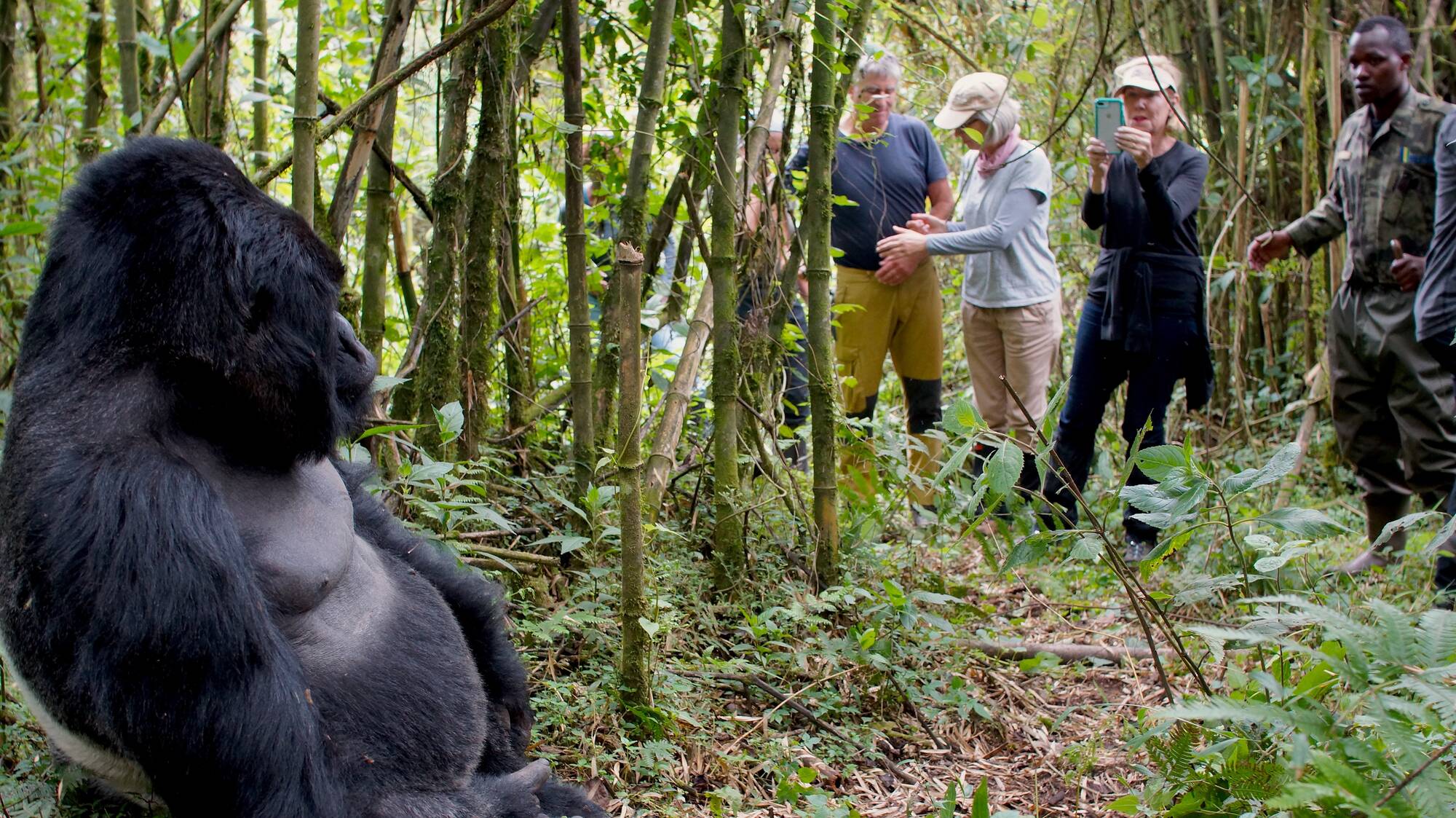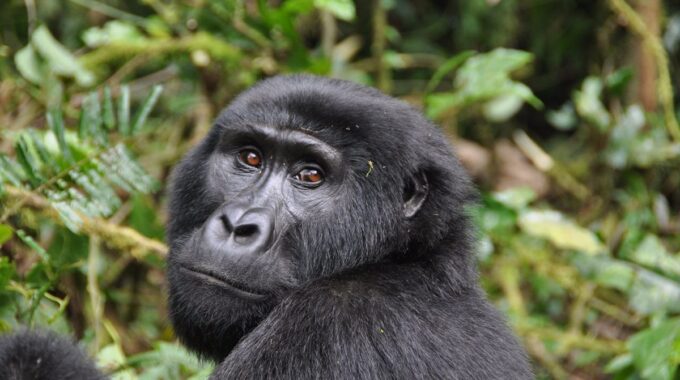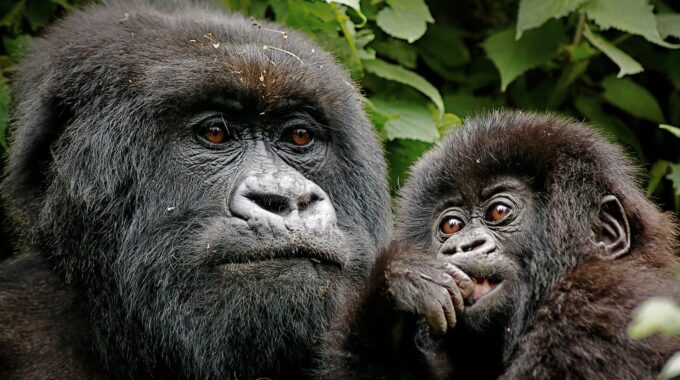Volcanoes national park, Bwindi gorilla park, and Mgahinga Gorilla National Park—Community Involvement in Park Conservation…
Park Regulations and Visitor Guidelines
Park Regulations and Visitor Guidelines for Gorilla Trekking in Rwanda and Uganda

Gorilla trekking regulations: Gorilla trekking is one of the most extraordinary wildlife experiences in the world. Whether you’re heading to Volcanoes National Park in Rwanda, or trekking through Uganda’s Bwindi Impenetrable Forest or Mgahinga Gorilla National Park, understanding the park regulations and visitor guidelines is essential. These rules are designed to protect the critically endangered mountain gorillas, preserve delicate ecosystems, and ensure the safety and satisfaction of all visitors.
In this guide, we outline the most important regulations, ethical considerations, and practical tips to help you prepare for a respectful and rewarding gorilla trekking experience.
Why Park Regulations Matter
Mountain gorillas are among the most vulnerable primates on Earth, with only around 1,000 remaining in the wild. They live exclusively in the dense rainforests of Rwanda, Uganda, and the Democratic Republic of the Congo. Conservation efforts, spearheaded by park authorities and tourism revenues, have played a crucial role in stabilizing their populations.
Park regulations are crafted to:
- Minimize human impact on gorilla habitats.
- Prevent the transmission of diseases between humans and gorillas.
- Ensure sustainable tourism.
- Enhance visitor safety in remote and wild environments.
Volcanoes National Park Regulations (Rwanda)
Located in the Virunga Mountains, Volcanoes National Park is Rwanda’s premier destination for gorilla trekking. The Rwanda Development Board (RDB) enforces strict rules to protect gorillas and their environment.
Key Guidelines:
- Permit Requirement
A gorilla trekking permit is mandatory and must be secured in advance through RDB or a trusted tour operator like Gorilla Rwanda Safaris.
[# Link to booking permits blog] - Group Size
Only 8 visitors are allowed per gorilla group per day to limit human interaction. - Time Limit
Visitors may spend a maximum of one hour with the gorillas to reduce stress and exposure. - Minimum Age
Trekkers must be 15 years or older. - Health Protocols
You must not trek if you’re sick (e.g., with flu, cough, or cold). Gorillas are highly susceptible to human illnesses. - Proximity to Gorillas
Maintain a minimum distance of 7 meters from the gorillas at all times. - No Flash Photography
Flash may startle the gorillas, so only non-flash photography is allowed. - Leave No Trace
Do not litter, remove vegetation, or disturb the habitat. - Stay Quiet and Calm
Sudden movements and loud noises can provoke gorillas. - Follow the Guide’s Instructions
Always listen to park rangers and guides—they’re trained in gorilla behavior and safety.
Bwindi Impenetrable Forest Regulations (Uganda)
Bwindi Impenetrable National Park is a UNESCO World Heritage Site and home to nearly half of the world’s remaining mountain gorillas.
Uganda Wildlife Authority (UWA) Rules:
- Permit Requirement
You must have a valid UWA gorilla permit, obtained through the UWA or a registered tour operator. - Group Size & Time Limits
Same as in Rwanda: 8 visitors per group, with 1 hour of gorilla viewing. - Minimum Age
15 years and above. - Health Precautions
Masks may be required. If you’re unwell, you may be denied entry for the safety of the gorillas. - Behavior in the Forest
Bwindi is dense and challenging to navigate. Visitors must be physically fit and follow the guide closely.
[# Link to physical fitness for trekking blog] - No Feeding Wildlife
This includes gorillas and other animals encountered on the trail. - Ethical Conduct
Avoid gestures or eye contact that could be perceived as threatening by gorillas. - Hygiene
Use designated toilets before the trek. If nature calls in the forest, dig a 30cm hole and cover it.
Mgahinga Gorilla National Park Regulations (Uganda)
Although smaller, Mgahinga Gorilla National Park offers an equally intimate and regulated gorilla trekking experience.
Important Guidelines:
- Permit Validity
Gorilla permits for Mgahinga are separate from those in Bwindi and must be arranged in advance. - Limited Groups
As with other parks, only 8 visitors per gorilla group per day. - Interaction Rules
Same proximity and time rules apply—stay 7 meters away, limit visit to 1 hour, and remain quiet. - Trekking Routes
Trails may be steeper and less developed—hiking boots and walking sticks are recommended. - Safety First
Always trek with an armed ranger for protection from wild animals and to navigate volcanic terrain. - Community Respect
Mgahinga borders the Batwa community. Respect cultural sites and follow local etiquette.
Consequences of Violating Regulations
Failure to adhere to gorilla trekking regulations can result in:
- Immediate removal from the park.
- Permit revocation without refund.
- Bans on future gorilla trekking.
- Health risks to gorillas, including exposure to diseases.
Following the rules ensures the sustainability of eco-tourism and the long-term survival of these majestic creatures.
Tips for Following Park Guidelines Effectively
- Hire a Porter: They not only carry your gear but also assist on slippery trails, making it easier to focus on rules.
- Dress Appropriately: Wear long sleeves, waterproof gear, and gloves. Bright clothing can be distracting.
- Pack Responsibly: Bring only essentials—camera (no flash), water, and snacks in reusable containers.
- Ask Questions: Don’t hesitate to ask your guide about regulations—they’re there to help.
- Follow Sanitary Measures: Use hand sanitizers, wear masks if required, and avoid touching vegetation unnecessarily.
What to Expect During Your Trek
Upon arrival:
- You’ll attend a briefing session outlining safety procedures and gorilla behavior.
- Group assignments are based on fitness and preference (some groups require more hiking).
- After the trek, you’ll receive a trekking certificate acknowledging your participation.
All three parks are committed to responsible tourism. Guides are fluent in multiple languages, knowledgeable in primate behavior, and trained in first aid.
Ethical Tourism and Your Role
Being a responsible traveler involves more than following rules. It means:
- Supporting local communities through eco-tourism.
- Respecting wildlife and natural habitats.
- Spreading awareness about gorilla conservation.
Your visit contributes directly to anti-poaching patrols, veterinary care, and community development projects.
Related Blog Posts:
- What to Pack for Gorilla Trekking in Rwanda and Uganda
- How to Book Gorilla Permits in Rwanda and Uganda
- Physical Fitness Requirements for Gorilla Trekking
- Photography Tips for Gorilla Trekking
- Cultural Encounters Near Mgahinga Gorilla National Park
External Resources
- Rwanda Development Board – Volcanoes National Park
- Uganda Wildlife Authority – Bwindi and Mgahinga
- International Gorilla Conservation Programme (IGCP)
Final Thoughts
Whether you’re planning to trek in Volcanoes National Park, Bwindi Impenetrable Forest, or Mgahinga Gorilla National Park, adherence to park regulations and visitor guidelines ensures a safe, ethical, and unforgettable adventure. The mountain gorillas are gentle giants whose survival depends on our respect and care. By following the rules, you become part of a global effort to protect them.



